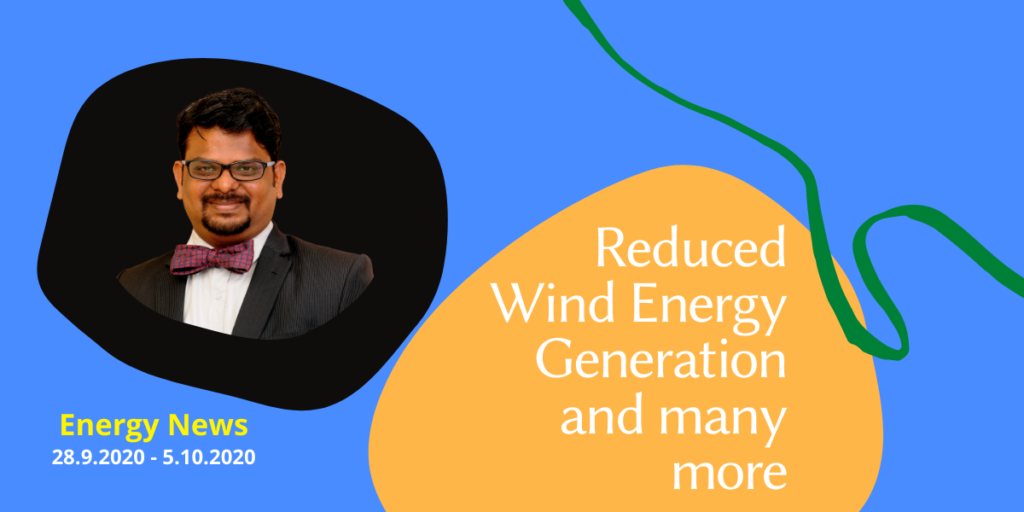The following are the various important events happened in the energy field from across the world between 28 September 2020 and 4 October 2020.
1) Central Electricity Authority (C.E.A.) Chairman Prakash Mhaske has said that share of renewable energy in India increased from 23% to 26% from April to August 2020. He also felt optimised about India reaching the target of carbon emission reduction by 30-33 % before the year of 2030.
2) India’ wind power generation has been down around 40% during the peak wind season that begins in June and ends in September and has impacted the firms having major wind power portfolios. The peak season usually accounts for 3/4th of India’ annual wind power generation. Climate change, rainfall patterns and changing global warming pattern are leading to variability in wind-speeds.
3) Indian Institute of Technology Kanpur (IIT Kanpur) researchers have fabricated 12×12 sq.cm. sub-modules from OPV cells built on paper substrates that exhibit performance comparable to a silicon PV device under illumination from a 1000-lux cool‐white light-emitting diode (LED).
4) A group of scientists in France have developed a new low-cost machine learning technology to run scheduled cleaning of solar photovoltaic (PV) modules installed in remote locations that are off the grid.
5) A team of researchers from Toyota Motor Corporation, Sharp Corporation, and the New Energy and Industrial Technology Development Organization suggested a special kind of solar cell that could be utilized for solar-powered electric vehicles in the future. The silicon-based III-V tandem solar cells can be utilized for solar-powered vehicle applications due to its high efficiency of over 42%, light-weight, and low-cost. The global cumulative photovoltaic capacity for solar-powered vehicles will be around 50 GW in 2030 and approximately 400 GW in 2040.
6) Norway-based risk management and quality assurance firm, DNV GL, has said that the trends of reduction in long-distance travel and increase in home office triggered by COVID 19 are likely to have lasting societal effects, which have a major impact on energy demand from transport and commercial buildings. Carbon Dioxide emissions are set to fall 8 per cent this year.
7) A joint study by the European Patent Office (EPO) and the International Energy Agency (IEA). The top five patent applicants for battery and energy storage between 2000 and 2018 were Samsung, Panasonic, LG, Toyota, and Bosch, according to the study. They generated over a quarter of all patent applications.
8) A hybrid battery energy storage system (BESS) has started full-scale operation as part of a smart grid demonstration project in Poland. The hybrid BESS includes 1 MW/0.47 MWh of high-output lithium-ion batteries and 5 MW/26.9 MWh of high-capacity lead-acid storage batteries manufactured by Showa Denko Materials.
9) Wood Mackenzie’s latest report shows global energy storage capacity could grow at a compound annual growth rate (CAGR) of 31%, recording 741 gigawatt-hours (GWh) of cumulative capacity by 2030.
10) Texas A&M University researchers have made a supercapacitor using materials derived from plants.
11) A team of University of Arkansas physicists has successfully developed a circuit capable of capturing graphene’s thermal motion and converting it into an electrical current.
Watch the Video in Tamil here
If you find any news that I may have missed or if you want updates from any specific energy sector, please let me know in the comment section.


